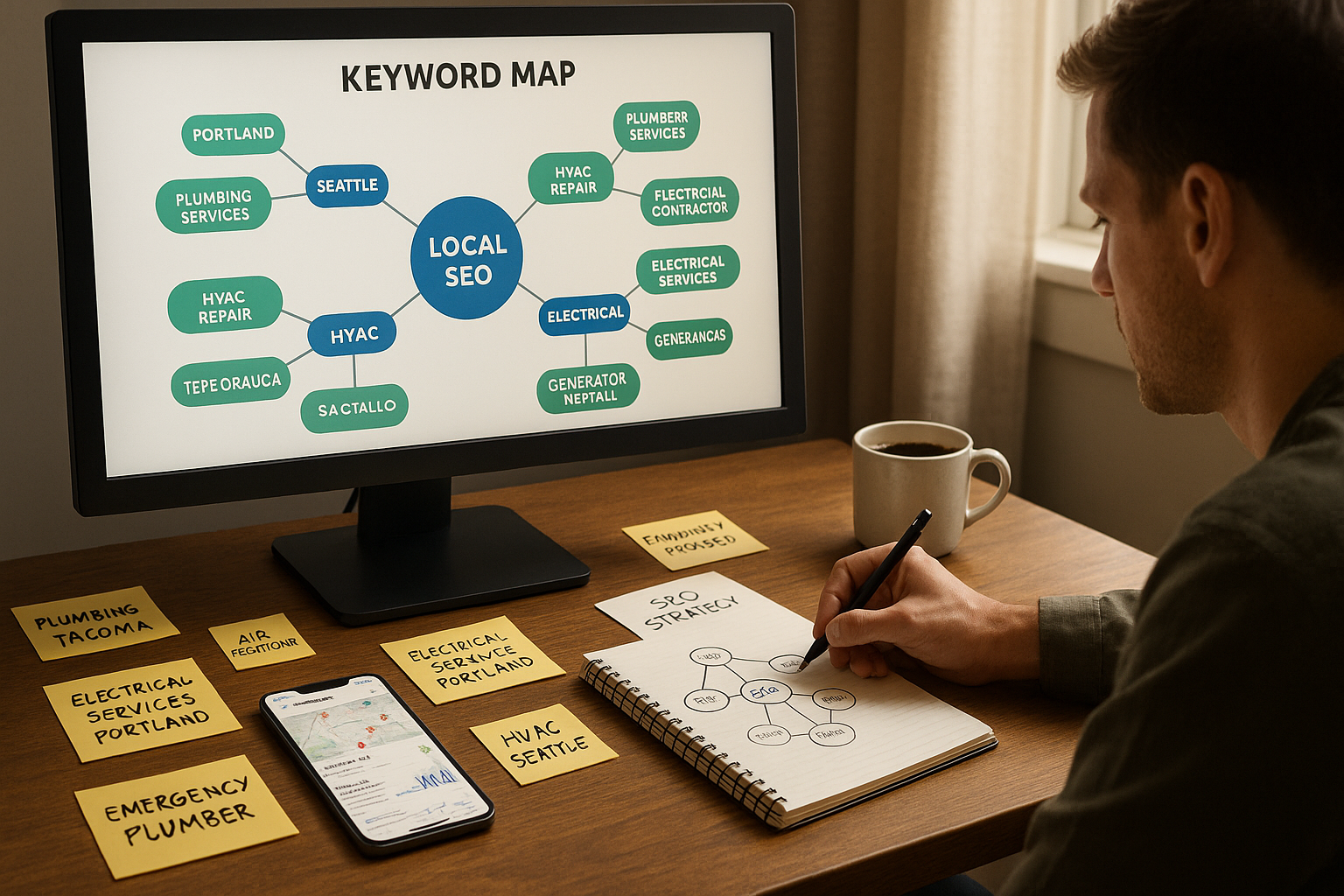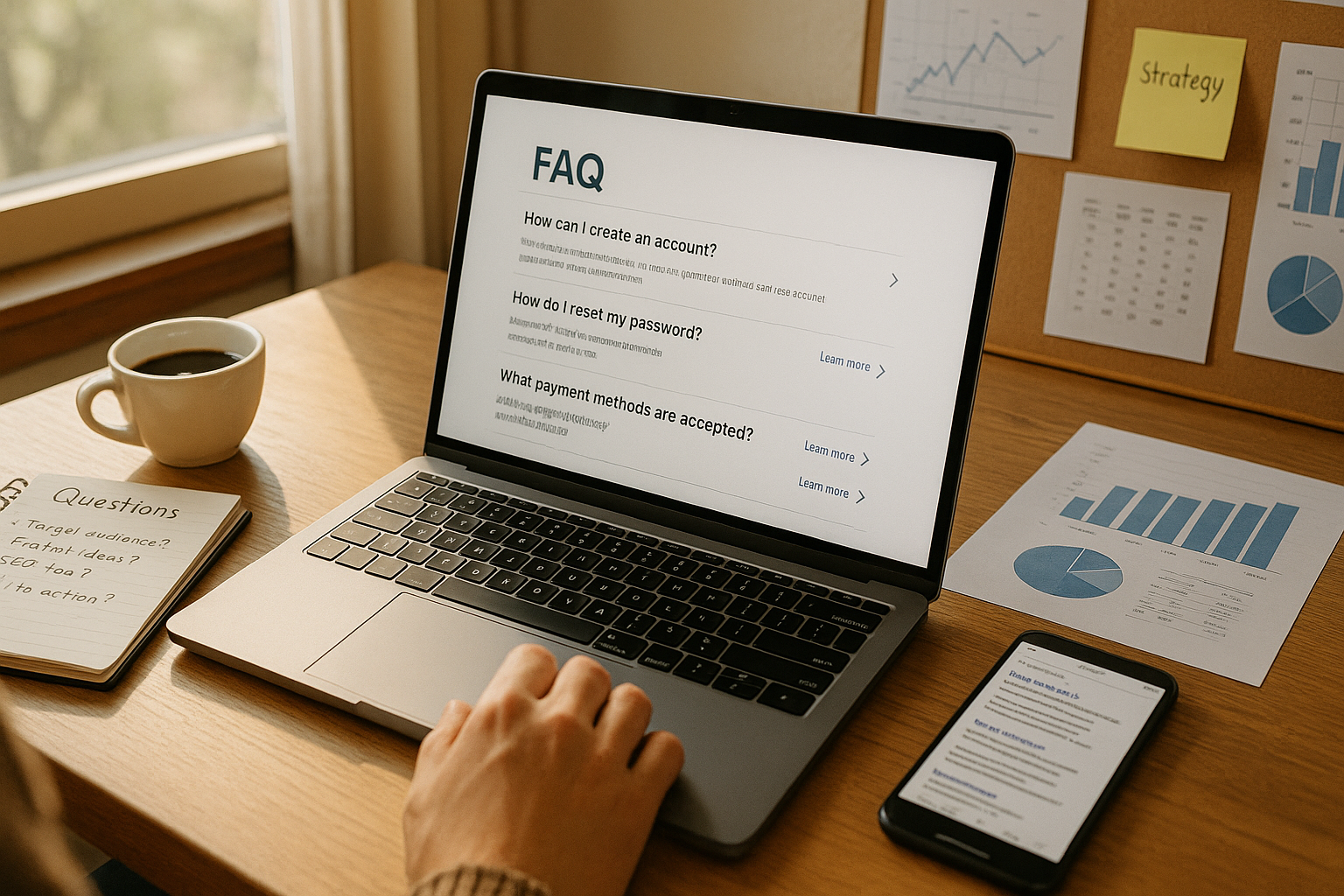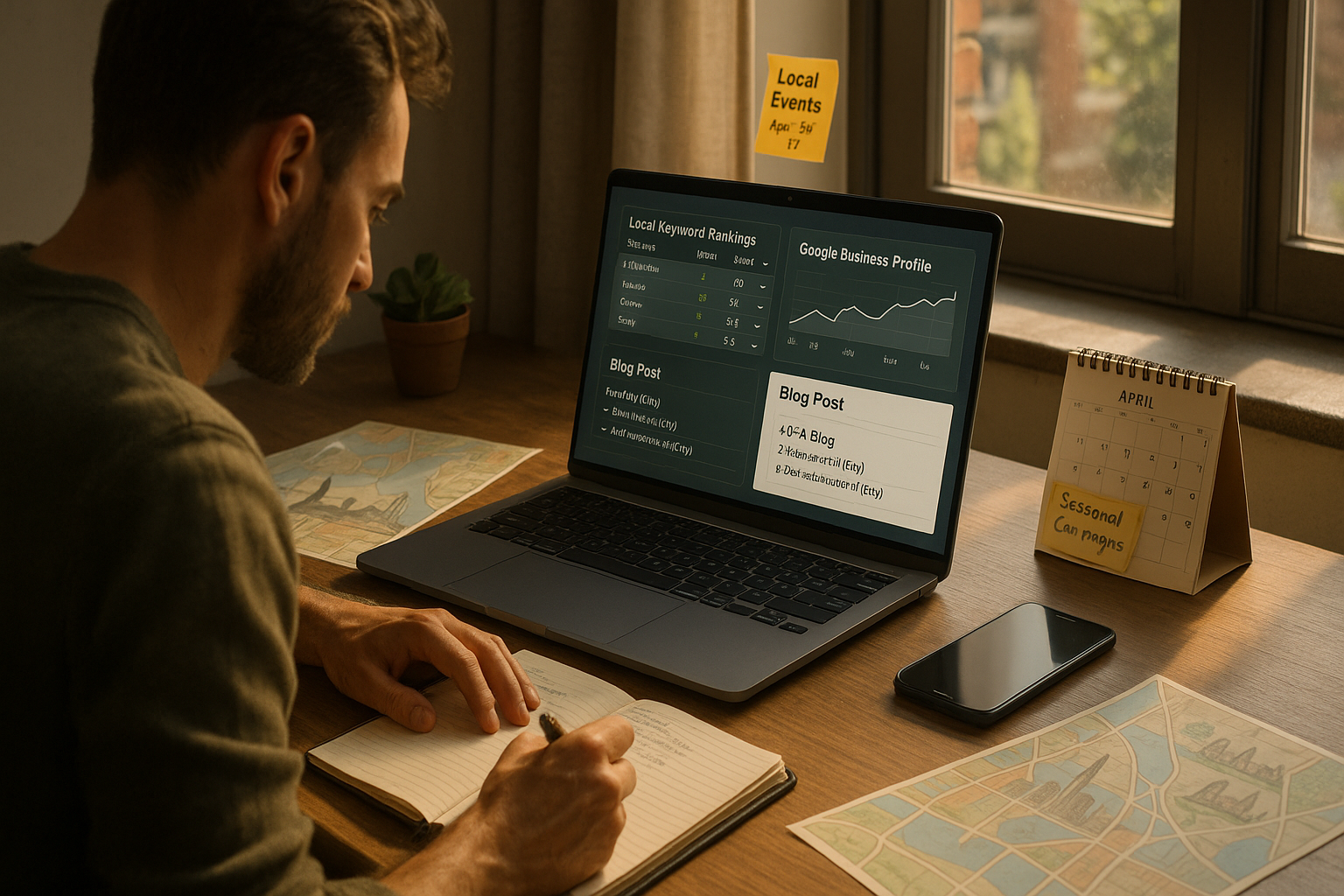How do I optimize my listing on Google Maps?
This is a subtitle for your new post
Optimizing a Google Maps listing is crucial for any business aiming to dominate local search and attract more in-person and online customers. In an increasingly mobile-driven world, consumers rely on Google Maps and Google Search to discover, compare, and engage with businesses nearby. An optimized profile not only fuels visibility for local keywords but also builds trust, leading to more calls, foot traffic, and conversions. For businesses serious about leveraging local SEO, a Google Maps strategy is no longer optional—it’s a must-have asset that underpins brand credibility, digital reputation, and growth potential. This guide, crafted by the experts at GetPhound, covers every core aspect of Google Maps optimization, from foundational setup to advanced authority-building techniques.
Claim and Verify Your Google Business Profile
Claiming and verifying a Google Business Profile is the first—and arguably most vital—step in Google Maps optimization. Before any tweaks or enhancements can be made, a business must first be in control of its official profile. Start at Google Business Profile’s landing page, add your business if it isn’t already listed, and follow Google’s verification process—this might involve a mailed postcard, phone, email, or even video verification. Verification signals to Google that you are the legitimate owner, increasing trust and authority in Map and Search results.
Once verified, your business profile becomes an interactive hub where local audiences can find up-to-date information, share reviews, and engage with your brand. Without this step, updates and optimizations won’t stick—or worse, competitors might claim your business erroneously. Pro tip: If you manage multiple locations, ensure each one is verified under its own profile for maximum reach.
Complete and Consistent Business Information (NAP)
One of the most significant local SEO ranking factors is having complete, consistent, and accurate business information: Name, Address, and Phone Number (NAP). The details you share on your profile should match exactly what’s on your website, local directories, and other web citations. Even slight mismatches (“Suite #200” vs. “Ste. 200”) can confuse Google and erode your search rankings.
Beyond the basics, fill out every available field: business hours (including special holiday hours), website URL, business category, attributes (e.g., “Wheelchair Accessible”), and a detailed business description. This comprehensive approach boosts relevance signals, helping customers and Google’s algorithms alike understand what you do, where you do it, and why you stand out. Regularly audit your information for accuracy, especially if you move, rebrand, or update services.
Choose Accurate Categories and Attributes
Selecting the correct primary and secondary categories is essential for relevance in Maps searches and Google local packs. The primary category should reflect your main business focus—e.g., “Italian Restaurant,” “Personal Injury Lawyer,” or “Marketing Agency.” Do not be overly broad or misleading, as this can harm both SEO and user trust.
Secondary categories can showcase additional expertise, such as “Pizza Restaurant” or “Family Law Attorney,” but don’t list categories that aren’t core to the business. Use the Attributes feature to define unique selling points—things like “Women-led,” “Online Appointments Available,” or “Free Wi-Fi”. These attributes appear in locally targeted search results and help win-over decision-driven customers.
Monitor competitors in your space: Which categories do the top-ranking local businesses use? Competitive research can reveal strategic choices that may boost your relevance and ranking potential. Periodically review Google’s list of categories, as they can evolve to reflect new industries and trends.
Write a Compelling Business Description Using Local Keywords
Your Google Business Profile includes a business description section—an ideal space for both storytelling and local SEO. Write a compelling, customer-centric summary: explain what sets your business apart, highlight years of service, unique values, and expertise. Importantly, weave in local keywords—city, neighborhood, or service area—naturally within the description. For example, “Serving King of Prussia and the greater Philadelphia area”.
Do not stuff keywords or make the copy read unnaturally; Google rewards clarity and helpfulness. Keep your description current, updating it when your services, staff, or focus areas change. Descriptions are also an opportunity to mention specialties, service guarantees, or industry awards that can build consumer trust.
Remember, the business description is one of the few places where you control your brand voice on the Maps platform. Use it wisely to educate, inspire, and motivate potential customers to learn more or take action.
Add High-Quality Photos and Videos
Visuals are powerful conversion tools on Google Maps, helping you stand out in a sea of options. Businesses with full photo galleries (interior, exterior, staff, products) receive considerably more clicks, calls, and driving directions than those with no images. Make sure to:
- Upload at least 5–10 high-resolution photos showing the storefront, interior atmosphere, teams, and key products.
- Use professional lighting and proper framing.
- Name files with descriptive, locally relevant keywords (e.g., “downtown-philadelphia-cafe.jpg”).
- Add short, engaging videos (walkthroughs, customer testimonials, “about us” reels).
Refresh the gallery regularly to keep the listing lively and accurate. Seasonal decor, new menus, or updated branding warrant fresh uploads. Outdated or low-quality images can deter clicks and reduce credibility.
Encourage and Respond to Customer Reviews
Customer reviews on Google Maps are a cornerstone of both search ranking and trust-building. Positive reviews signal authority and reputation, helping Google rank your business higher—and consumers to choose your brand over competitors. To maximize review impact:
- Proactively ask customers to leave a Google review, especially after a positive experience.
- Place your review link in emails, invoices, and on-site signage.
- Respond promptly and professionally to all reviews, both positive and negative. Thank reviewers, address complaints sincerely, and demonstrate your commitment to customer satisfaction.
A high volume of quality reviews not only boosts rankings but also increases conversions, as social proof is a powerful influencer. Encourage photos and detailed feedback within reviews for additional relevance and credibility. Never offer incentives or try to manipulate feedback—Google may penalize such practices.
Maintain Consistent Local Citations and Build Backlinks
Consistency across all web directories—Yelp, Bing Places, Apple Maps, industry directories, and local business chambers—reinforces Google’s trust in your business data. NAP consistency is vital: details in third-party citations should exactly match what's on your Google Business Profile. To extend local ranking power:
- Submit your business to reputable directories and citation sites.
- Partner with local organizations, charities, or news publications for event sponsorships or collaborations that can earn high-quality backlinks.
- Check for unlinked mentions of your business online and request they add a link with your correct name and address.
Backlinks from trustworthy, local sources (e.g., newspapers, universities, community organizations) act as digital recommendations. These links and citations help Google “triangulate” your business’s legitimacy and further elevate its position in Maps and local packs.
Regularly Post Updates, Offers, and Events
Google Business Profile lets you share Posts—short-term updates, special offers, or event announcements—which appear directly on your listing. This feature is crucial for:
- Highlighting sales, new product launches, or service changes.
- Announcing holiday hours, special events, or community involvement.
- Sharing blog articles, tips, or media coverage.
Active posting shows Google and users you are engaged and current. Posts with images, calls to action (“Call Now,” “Learn More”), and timely content attract more engagement. Regular updates help maintain high listing activity—a potential ranking signal in itself.
Utilize Google Q&A and Messaging
The Questions & Answers (Q&A) section of your listing is a powerful, often underused, trust-driver on Google Maps. Users can ask questions about your business, which you—or your customers—can answer. To optimize this:
- Seed the Q&A section with frequently asked questions, providing clear, accurate answers.
- Monitor questions and respond quickly, especially to new or time-sensitive queries.
- Correct misinformation or clarify ambiguous responses left by third-parties.
Enabling Google Business Messages allows users to send you direct messages from the Maps listing. Fast, courteous responses to messages convert more prospects and improve engagement rates—another signal Google weighs when ranking local businesses.
Monitor Performance and Adjust Your Strategy
Ongoing success on Google Maps requires regular analysis and adaptation. Use Google Business Profile Insights to track:
- How many people view or interact with your listing.
- Which search queries bring up your business.
- User behaviors: calls, direction requests, website clicks.
Review trends: Did customer engagement rise after you uploaded new photos? Did posting offers drive more calls? Use A/B testing to isolate the impact of specific updates, promotions, or content changes. Watch what your competitors are doing—are there categories, attributes, or photo types you haven’t used?
Leverage this data to design smarter, more efficient strategies over time. Google’s local algorithms change, so routine optimization is essential to stay on top.
Overall
Optimizing for Google Maps is a dynamic, ongoing process that blends technical precision, creative storytelling, community engagement, and data-driven growth. By following the best practices outlined—claiming your profile, ensuring NAP consistency, leveraging categories and attributes, writing compelling descriptions, posting rich media, prioritizing reviews, building local authority, engaging actively, and continuously tracking performance—businesses of any size can significantly boost local search visibility, credibility, and customer engagement. The result: more leads, foot traffic, and lasting growth through digital excellence.
GetPhound's dedicated approach—focusing on impact, affordability, and responsiveness—makes these strategies accessible and scalable for every client. As digital landscapes continue to evolve and local search trends accelerate, an optimized Google Maps listing isn’t just an advantage; it’s a necessity for sustained success in today’s marketplace.












